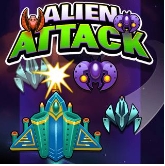The 6 Best New Zealand Adventures for Families
From rafting whitewater to glamping among the sheep, these adventures will keep everyone happy
The many draws of New Zealand are well-known: no creepy-crawlies, no venomous snakes or large predators, and no language barrier. The country is safe, and the scenery will blow your mind—from emerald-green sheep paddocks to golden beaches, surf-pounded shores and spiky alpine peaks, every square inch of this South Pacific adventure mecca is stunning.
Sure, getting there means at minimum a 12-hour trans-Pacific flight from the West Coast, but if your kids are like most, they could happily circle the globe six times over as long as they have a tiny TV screen and a full roster of movies six inches in front of their face. (Pro tip: Have them change into their PJs before the flight takes off.)
On the map, the North and South Islands look so small—combined, they’re but a squiggle of dry land in the middle of the South Pacific, hardly longer than your pinky finger—but don’t be fooled. With twisting roads and a staggeringly varied geography squeezed into a land area slightly smaller than California, you’ll need sufficient time and a savvy game plan to do it justice. These suggestions should help.
Raft and Ride
Fresh off the flight in Auckland, beeline for the Rangitikei River, the third longest river on the North Island. Break up the five-hour drive from the airport with a mile-long walk to Hupa Falls, near Lake Taupo, where the ice-blue Waikato River funnels through a skinny gorge. Southward still, you’ll zig and zag through hilly sheep country along increasingly narrow farm lanes to reach River Valley Lodge, a sweet and secluded outpost tucked into the Rangitekei’s narrow canyon, 30 minutes from Taihape, the nearest town.
The family suite makes for a homey base, and the roast dinners cooked on the “barbie” are pure “N Zed”—not that you’ll want to sit still for long when there’s trophy trout fishing a stone’s throw from your room and a wooden hand-pulley, or “trolley,” on which to cross the river to the hiking trail on the other side. In the morning, guides will get you kitted out in wetsuit and booties for a four-hour float downstream from the lodge on Class II–III rapids. You’ll paddle rafts and duckies beneath 200-foot walls literally dripping with moss and ferns, past cobble beaches and swimming holes, and very likely not another soul. The lodge also offers horse treks along the property’s farm tracks and up the steep flanks of Pukeokahu Mountain. Like so many remote properties in New Zealand, River Valley Lodge has been in the same family for five generations (the kids go to the rural school just up the road), and their connection to the river and its canyon is contagious. Family suite from $195.
Hike a Famous Track
New Zealand is justly famous for its hiking trails, the most popular of which is the Abel Tasman Coast Track, along the northern tip of the South Island. It also happens to be the perfect multiday trek for families. The low-elevation, mostly level track is manageable for even the littlest of legs, and you’ll find golden-sand beaches and turquoise bays around nearly every turn. Walk a 24-mile segment in four days, with layover, and you’ll have plenty of time to picnic and swim on every idyllic crescent of sand you come to—all undeveloped, roadless, and protected as part of Abel Tasman National Park.
There are well-spaced hikers’ huts and campgrounds en route, but a splurgier way to do it is to arrange for self-guided glamping with Abel Tasman Guides. Wally and his team will arrange for your water taxi to Totaranui Beach, at the northern end of the track, and set you up with each night’s accommodations in glam tents complete with cots and freshly cooked meals. At Awaroa Glamping, in tiny settlement of Awaroa, Mike and Birgit Crawford will ply you with delicious homemade pizzas from their outdoor pizza oven while you sip Marlborough sauvignon blanc overlooking the beach. After dinner, walk down the grass landing strip to the Awaroa Lodge to see the tame freshwater eels. Remember to look up: The stargazing on this roadless, remote stretch of coast is off the hook.
Twelve miles south along the track is Anchorage, a protected cove with a pretty campsite in the grass behind the beach, There’s plenty to do on your rest day: Hike three miles to Cleopatra’s Pool (a freshwater swimming hole), forage for mussels at low tide, hike the two-mile loop to Te Puketea Bay, and go in search of the glowworm cave after dark. From there, it’s six miles south to the terminus at Marahau. All-inclusive glamping treks from $985.
Go Glamping
Traveling by camper van, or “freedom camping,” is the most popular way to explore New Zealand, and for good reason. You can pull over and sleep pretty much anywhere you want, without paying a cent for the million-dollar views. But with increasingly crowded roadways, pricier rental rates, and a host of new restrictions intended to minimize campers’ impact on the land (every freedom van must be self-contained with a toilet on board or face a $200 fine), there’s a better option for families who want to sleep close to nature without roughing it: glamping.
Kiwis have perfected the art of laid-back, rustic luxury, and dozens of remote, off-the-grid hideaways are popping up around the country. Think safari tents with tiny wood stoves, galvanized-tin huts with built-in bunk beds, Pinterest-worthy mini-kitchens with propane stoves, long wooden candle-lit dining tables, and outdoor tubs for soaking under the Southern Cross. Canopy Camping Escapes has rounded up the best of the lot, with nearly three dozen properties on both the North and South Islands. All are long on privacy and views, many are set on sheep stations that have been in the same family for generations, and most offer a chance to interact with the young farmers and their kids.
Outfitted with “chilly bins” (aka coolers), solar lights, hot running water, plenty of outdoor games, and access to farm tracks for hiking, you’ll be reluctant to leave. At the Honeywell Hut, nestled 13 miles up the Baton Valley against the high peaks of South Island’s Kahurangi National Park, the Baton River flows clear and fast with wily trout, co-owner Fiona Simons will take you horseback riding at sunset, and a local masseuse makes hut-calls. Perfection. From $200 per night.
Surf the East Cape
The country’s best, most consistent waves can be found in the sleepy beach town of Gisborne, on the North Island’s east coast. It’s also an up-and-coming wine region known for its chardonnay. Rent a beach house, or “holiday bach,” at Wainiu or Makarori Beach—like Malibu in the 1970s—and walk out your front door to the breaks.
Walking on Water offers group or private coaching for all ages, starting young. Liz, the owner, will even deliver rental boards and wetsuits to your door. Then there’s Surfing with Frank, run by an American expat who moved here from California in the 1970s. Roll up to any of the three main beaches and chances are you’ll find Frank in the water with a gaggle of kiddos. Between sessions, climb the short but steep trail to Makoriri Point, a windy headlands overlooking the beach, or head to the Wainui Store for New Zealand’s famous coffee (order a “flat white” if you want a latte, a “long black” for a basic black coffee) and meat pies.
Whale Watch
On the South Island’s northeast coast, Kaikoura is rugged and windswept, a mini Big Sur with a fraction of the people, newly recovered from a 2016 earthquake. It’s also New Zealand’s primo whale-watching destination. Male sperm whales, humpback whales, blue whales, minke whales, and southern right whales congregate along the Kaikoura Canyon, a 1.8-mile deep underwater trench just offshore, feeding on the rich marine life stirred up by the currents.
The Maori-owned Whale Watch Kaikoura runs four three-hour boat tours a day from the Kaikoura harbor. They’re so confident you’ll spot a whale that they’ll give you 80 percent of your money back if you don’t. Occasionally, rough seas will cancel the cruises; if this happens, wander out on foot at low tide to Point Kean on the Kaikoura Peninsula, where the surf-hammered rocks are littered with snoozing New Zealand fur seals.
Take the three-mile hike up and over the peninsula and back into town for homemade boysenberry ice cream at Poppy’s, or hike two miles up to the lookout on the flanks of Mount Fyffee for long views up and down the coastline. Glamp at Camp Kekerengu, 40 miles north of Kaikoura, on a high bluff backed by 3,000 acres of rolling green paddocks and looking straight down to the crashing surf. Resupply on chowder, seafood, and coffee at the hip Kekerengu Store and restaurant six miles up the road.
Sleep with Sheep
Sheep outnumber people in New Zealand, but don’t limit your appreciation to drive-by sightings through the rental car window. Farm stays are the way to go. Sequester yourself for a couple days at the pastoral Ridge Top Farm, a stylish glamping setup with canopy tent and galvanized bunk room and an indoor/outdoor dining room—and 2,000 ewes grazing and baaing in the field next door. This is arguably the greenest spot on the North Island, with hills rolling out in all directions.
Owners Angus and Sarah and their three young kids, a third-generation farming family, have marked eight miles of farm paths for walking. Arrange for the “Glamp and Tramp” package and Sarah will send you off each day with a homemade picnic lunch. (She also prepares delicious dinners with advance notice.) During summer shearing season (December and January), you can join Angus in the barn to watch the local shearing team at work.
This is hard physical labor: They shave upwards of 1,000 sheep a day, cranking tunes to stay focused. Afterward, if you’re lucky, Angus might invite you to ride along on the back of his four-wheeler while he and his sheepdogs put the shorn ewes out to pasture. Time your trip right and you might catch a glimpse of the neighbors’ wee black piglets. From $190. (Shearing demo extra.)
You May Also Like

AI in Fashion: Transforming Design, Shopping, and Sustainability for the Future
March 1, 2025
Sprunki: A Comprehensive Exploration of Its Origins and Impact
March 19, 2025